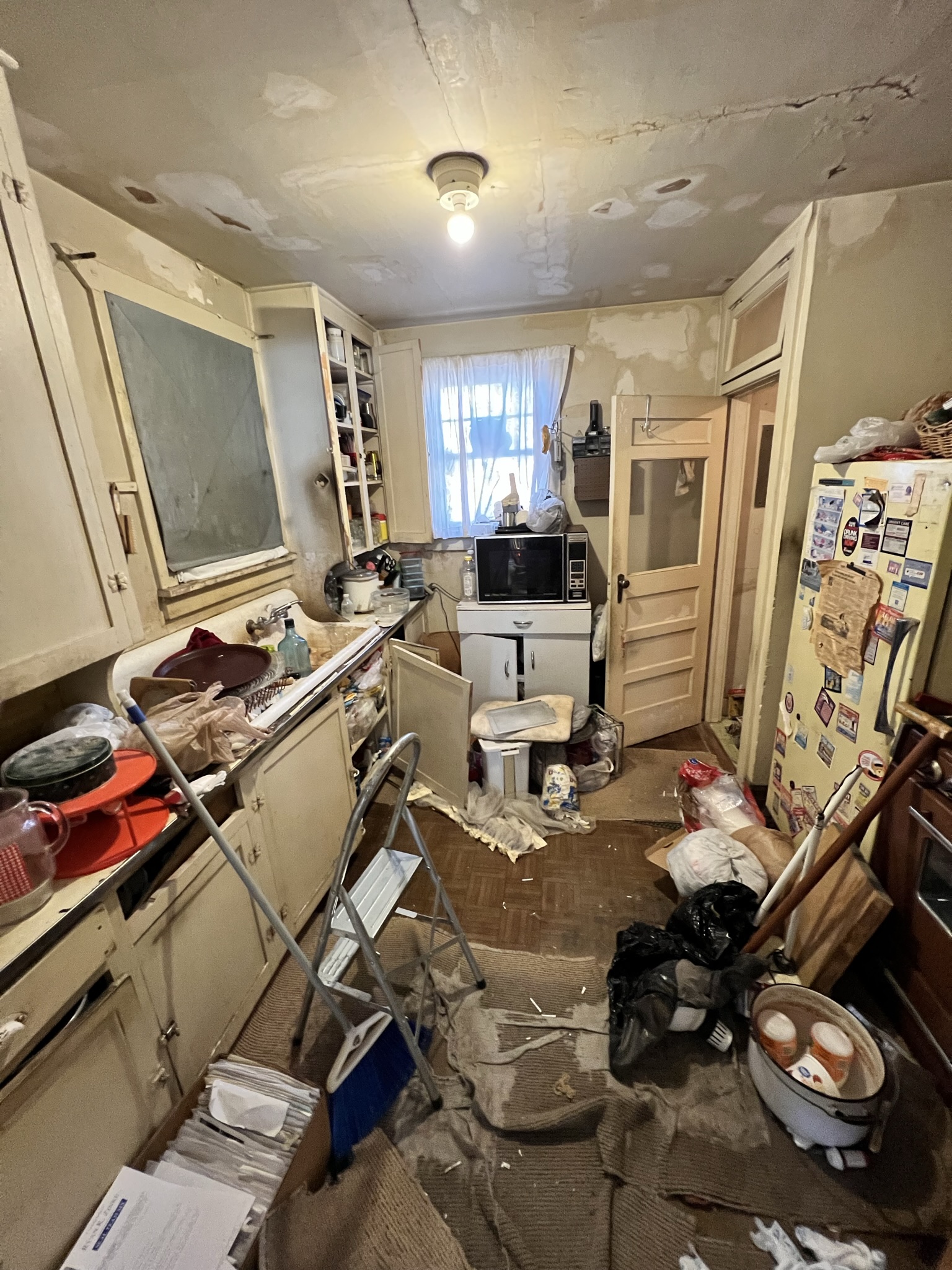Real estate investors have seen ‘em. About anyone who buys properties regularly has run across a few.
You’ve probably seen some too, maybe unwittingly.
I’m talking about trashed out properties. Some are hoarder houses. Homes so stuffed with stuff that it bends the mind. Full of filthy clothes, broken down furniture and stacks of ancient newspapers.
Sometimes the homes are in extreme disrepair, with holes in walls and ceilings, open and exposed to the outdoor elements. With cabinet doors hanging loose or missing. Multiple generations of busted appliances.
They may have stopped up toilets and plumbing that hasn’t worked in years. Animal feces on floors. Such homes often seem inhabitable. But very often, people still live there. Sometimes the squalor isn’t evident from the street.
Denver investor Derek Marin ran across one of those properties not too long ago. Through his investment company called ELEVATION, he buys more than 20 properties per year.
“It was a solid six from the street,” he says, rating the home’s curb appeal on a scale of one to ten. A 2,000 square foot frame house in Englewood, it more or less resembled its neighbors.
“Inside, it was no better than a one.” Over the next 10 days a crew filled 17 dumpsters with trash. They expertly rehabbed the home and resold it four months later.
—
Neglect and destruction of properties can stem from all sorts of factors. Mental illness is an obvious one, particularly among hoarders.
In cleaning out many houses, Marlin’s crew has found virtually nothing of value. Maybe a few suitcases or lamps acceptable to a thrift store, he says.
So it’s not like the hoarders are building an investment in collectibles. It is more about their inability to let go, he says. It is a memory issue, as in memory care.
Quite common are issues of multi-generational ownership and occupancy, he says. “Like the grandparents own the house and their adult children are living there with their own kids.”.
Marlin entered a home where the parents were holed up in the basement doing drugs while their child scurried around upstairs in diapers, unsupervised.
“To me it was heart breaking. I’m a father and I’ve had young kids myself,” he said.
“We considered calling Child Protective Services.” But the home sold to someone else and the family soon was gone.
The multiple-dumpster property was owned by a woman whose adult daughter had lived there for years. Even after ownership transferred, the daughter kept breaking in to retrieve insignificant items.
—
Often the residents of dilapidated homes have become overwhelmed by life circumstances. Such as a disability, or the death of a spouse who managed the home and paid all the bills.
“You see furnaces that were serviced like clockwork for 20 years and then it just stopped,” he says.
Trashed out houses are not strictly the realm of rentals. “I’d say it’s about 50/50, renters and owner occupants,” said Marlin. They are not confined to lower priced areas. “We’ve seen them in Wash Park,” he said.
The good news? “We live in an affluent city.” Denver home values have risen so much that even many trashed and neglected properties have equity. Their market value exceeds the mortgage debt. So they can be sold with cash proceeds, even if uninhabitable.
When a full renovation in completed, Marlin’s team may invite the departed occupant back inside to see the result. “Sometimes they break down and cry, seeing the home in the condition they always wanted for it.”
I personally have walked through hoarder houses in Denver and other cities. Every day, I receive emails from sellers in St. Louis, where home prices are a fraction of Denver prices.
Consistently, the distressed properties in that city look a cut or two worse than Denver. Without sufficient underlying value, a home can reach a point of no return—no investor will buy it.
—
Most folks are fortunate enough to have dodged the worst effects of poverty and mental illness. But we all have challenges. For the benefit of all of us, I picked up a book with the optimistic title, “The Life-Changing Magic of Tidying Up: The Japanese Art of Decluttering and Organizing.”
Here are a few tips:
- Before decluttering, discard, discard, discard.
- Attack it ruthlessly. Don’t de-clutter little by little, or you’ll be doing it forever.
- De-clutter not room-by-room, but in categories. Such as clothing first, then books, etc.
Seems like sound advice. As for life-changing, I will let you know, next time.

